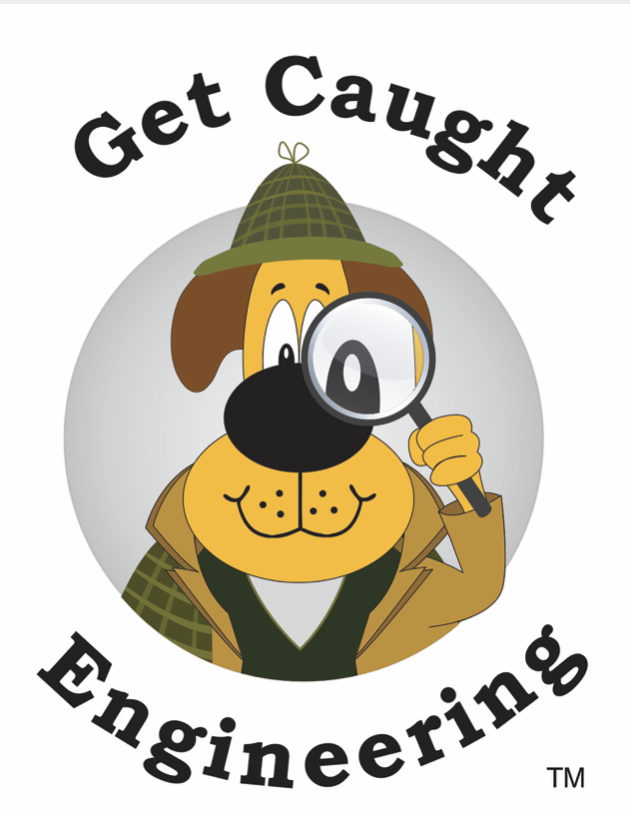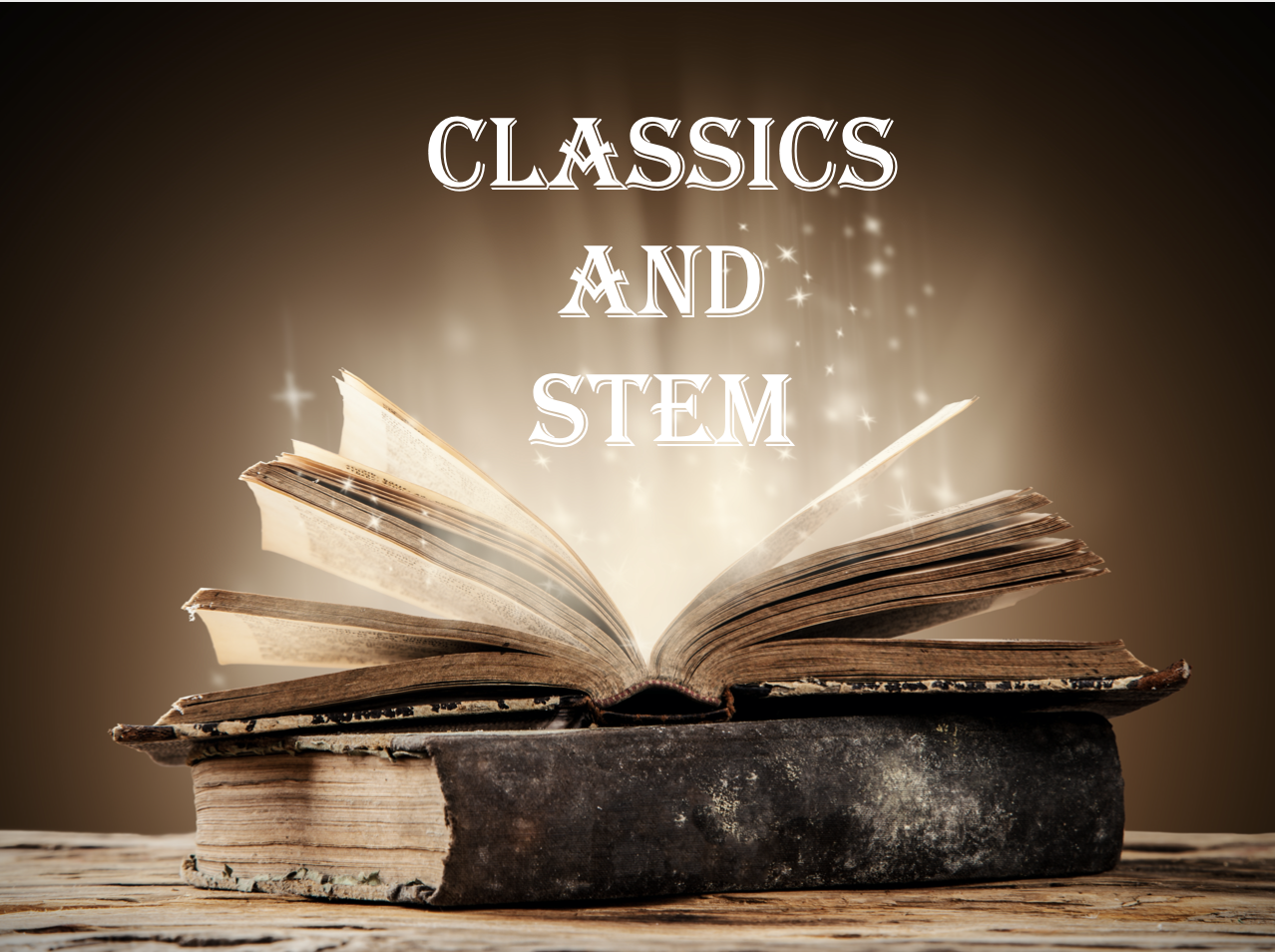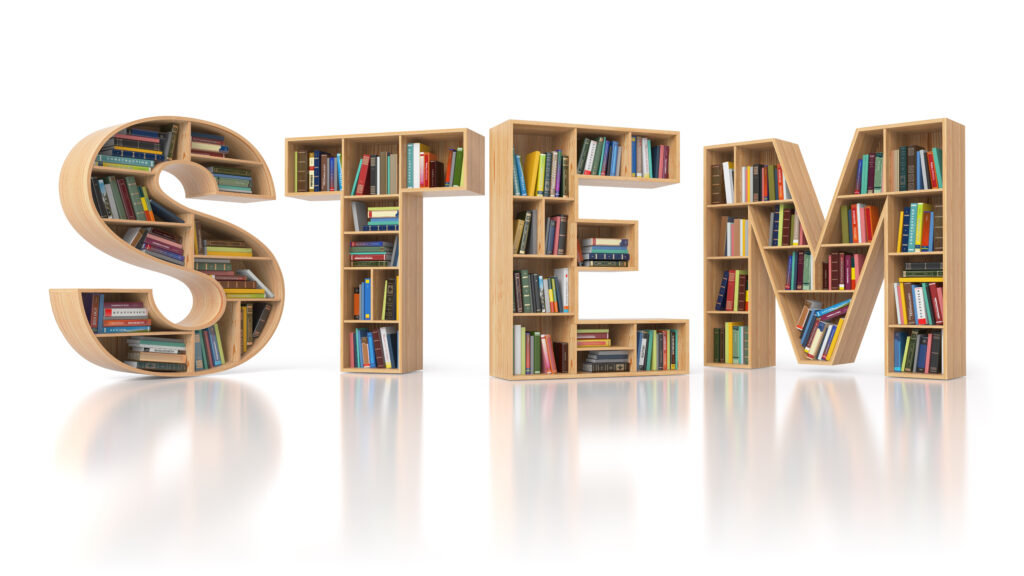
Looking to more fully integrate STEM into your curriculum? Are you looking for a way to involve your parents in their child’s learning? Do you need it to be easily adaptable to a virtual setting? We have the answer for you.
Our Classics and STEM series integrates all of the wonderful facets of STEM while reading great classic literature and acting as a parent outreach program!
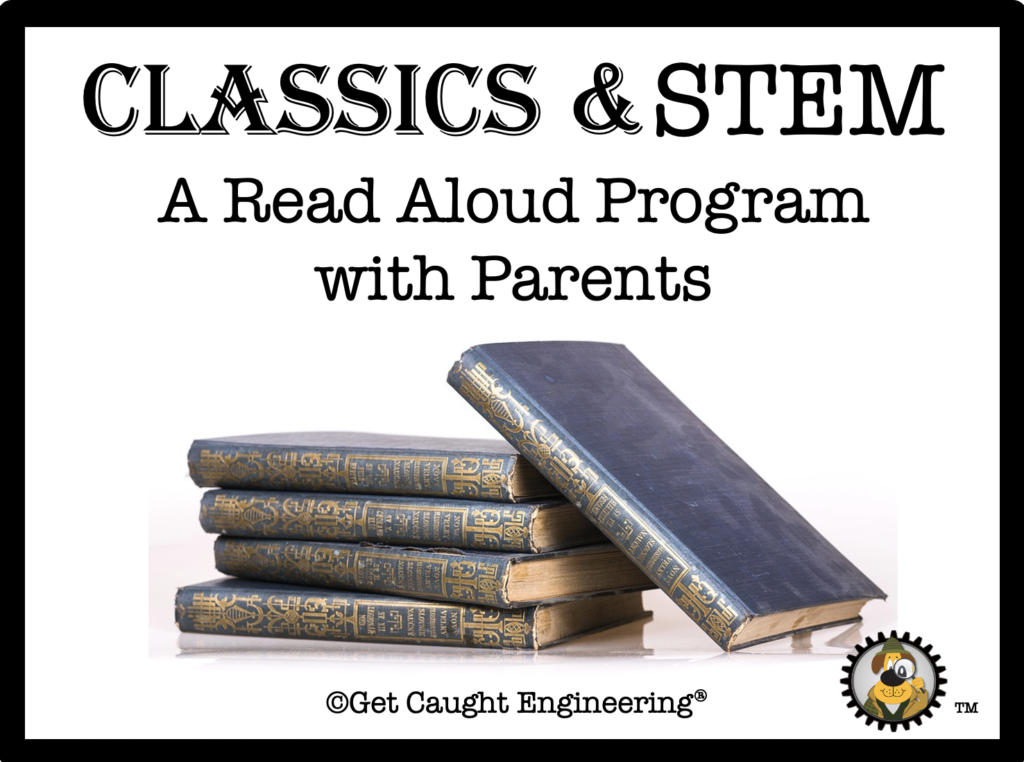
What Is Classics and STEM?
At its core, the Classics and STEM program is a read aloud program that includes the parents. Not only do the parents read a classic novel to their child, but they participate in the Family Celebration at the conclusion of the book. In class, there is the usual discussion about the story, but we extend and enrich the book by finding the science, technology, engineering, and math in the story. Then, the culminating Family Celebration has themed food and activities as well as provides a chance to, one last time, talk about the book.
One thing that really sets this program apart from others is the use of classic literature. Often these books aren’t necessarily those a child would pull off the shelf on their own. However, while reading, they discover stories and characters that they relate to and love.
By looking for the STEM in the book the students now have opportunities to generate design proposals and solve problems. In short, this program cuts across the curriculum.
Look for the STEM

Integrating STEM into the chosen classic novel means reading the book through a STEM lens and finding those STEM topics that present themselves. Trying to find a science topic to explore? Luckily science is everywhere and can be found in both fiction and nonfiction. It just needs to be identified.
For example, Charles Dicken’s A Christmas Carol, written over 180 years ago, wouldn’t seem an ideal candidate to present STEM activity ideas. However, all we had to do was look.
Using the overall setting of darkness and freezing cold, students practiced their scientific observation skills by performing dry ice experiments.
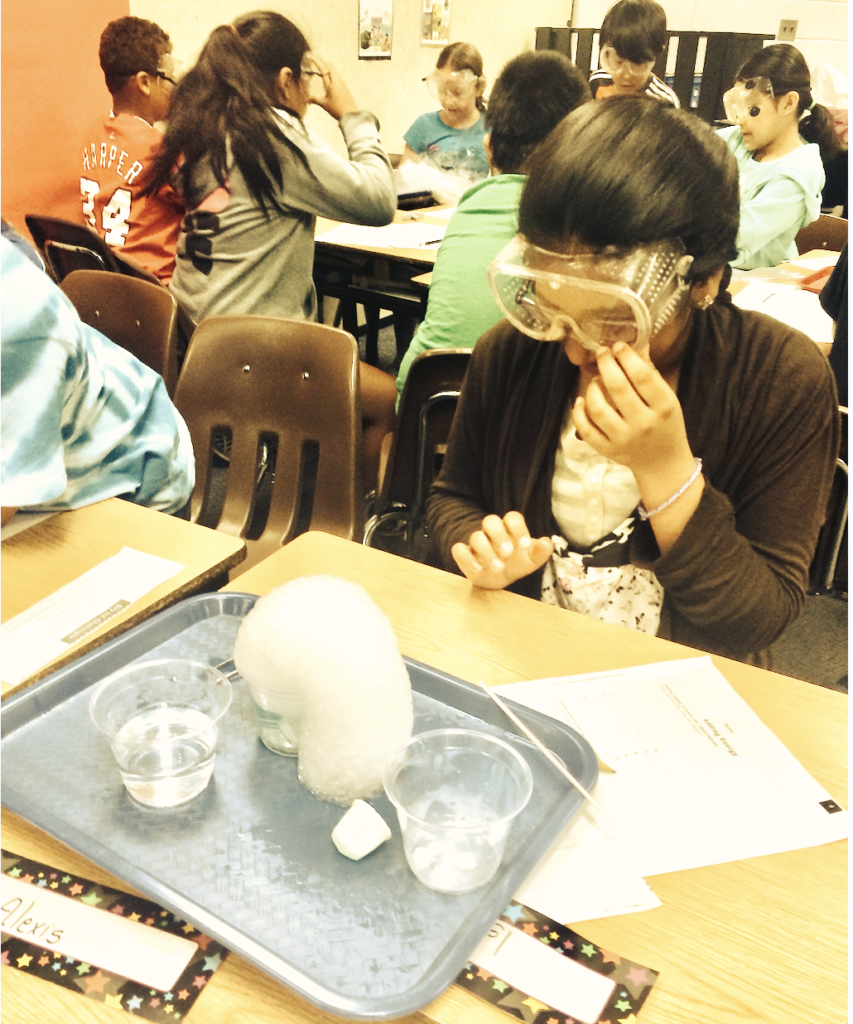
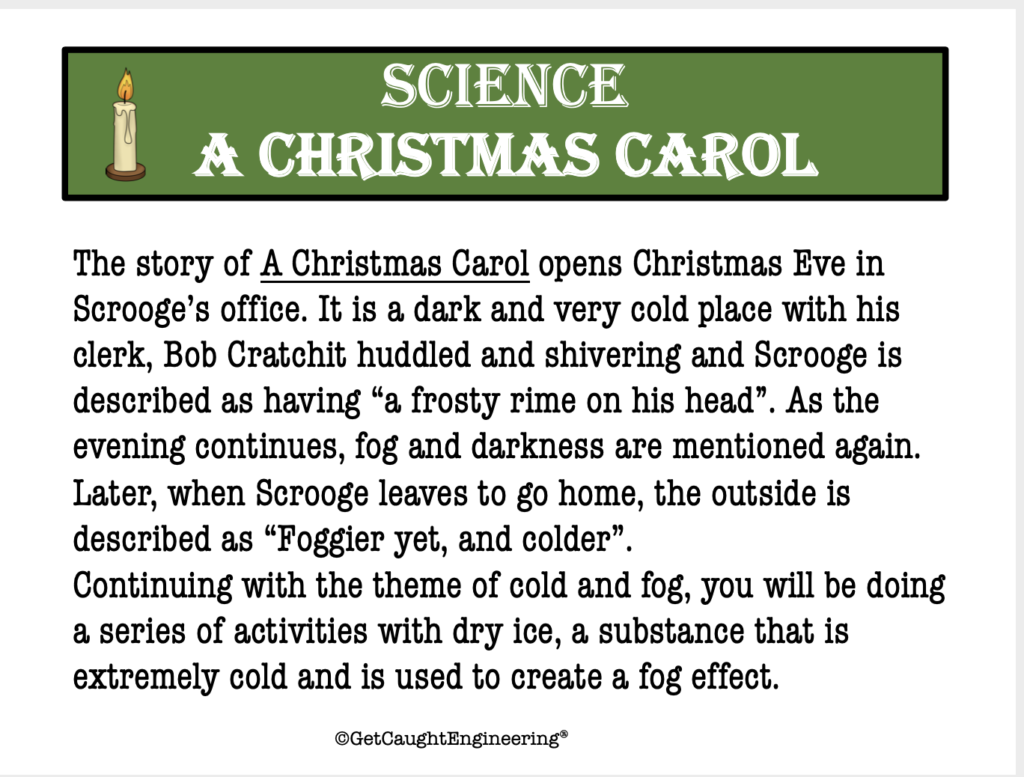
They also programmed robots to navigate a maze they created depicting the visiting spirits as well as used their math skills to plan a holiday celebration with a budget.
One of our favorite engineering lessons while reading Roald Dahl’s Charlie and the Chocolate Factory was having the students build an elevator prototype and learn about paper chromatography while investigating colored candies.

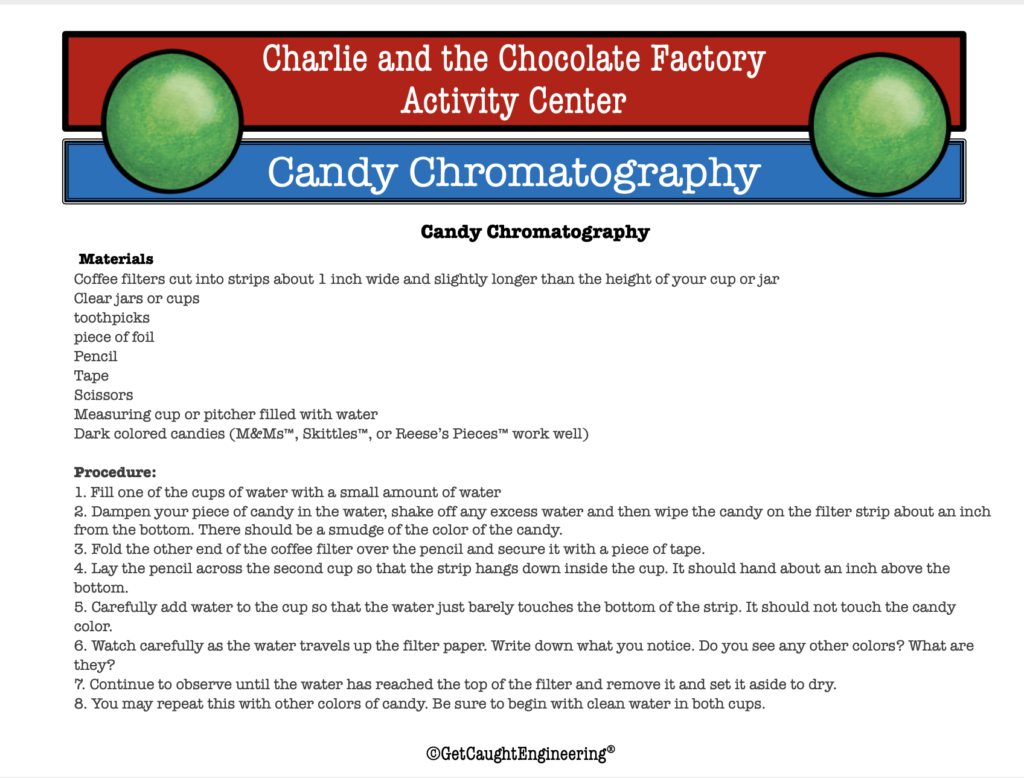
Math examples can sometimes be a little more subtle to find but, like science, it’s all around us. While reading Lewis Carroll’s Alice in Wonderland what better way to build on the White Rabbit’s obsession with time than by having the students solve elapsed time problems?

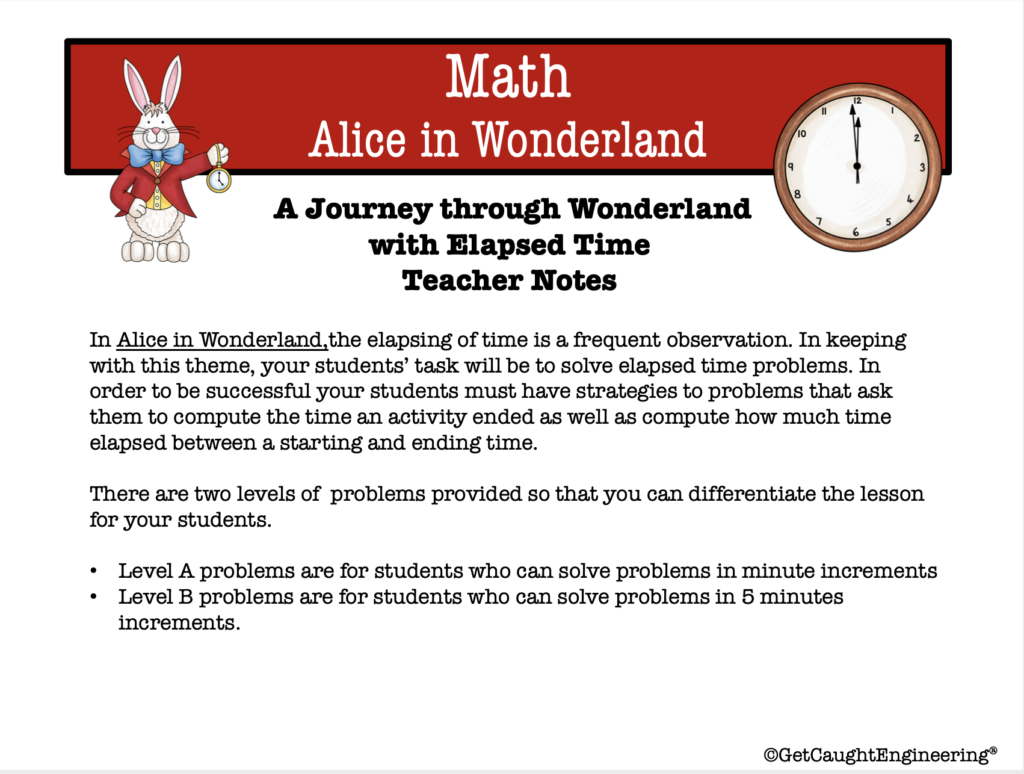
The Family Celebration

After reading the book in the evenings to their student, it’s now time to come together to celebrate with fun and food. It is one of our favorite activities during the school year and one the parents and students alike look forward to.
All activities should have some relation to the book, time period, or even to a particular character. For example, when we read A Christmas Carol, the students made orange pomanders which was a typical decoration made during the time period the book was written. Students created their own Golden Ticket after reading Charlie and the Chocolate Factory.
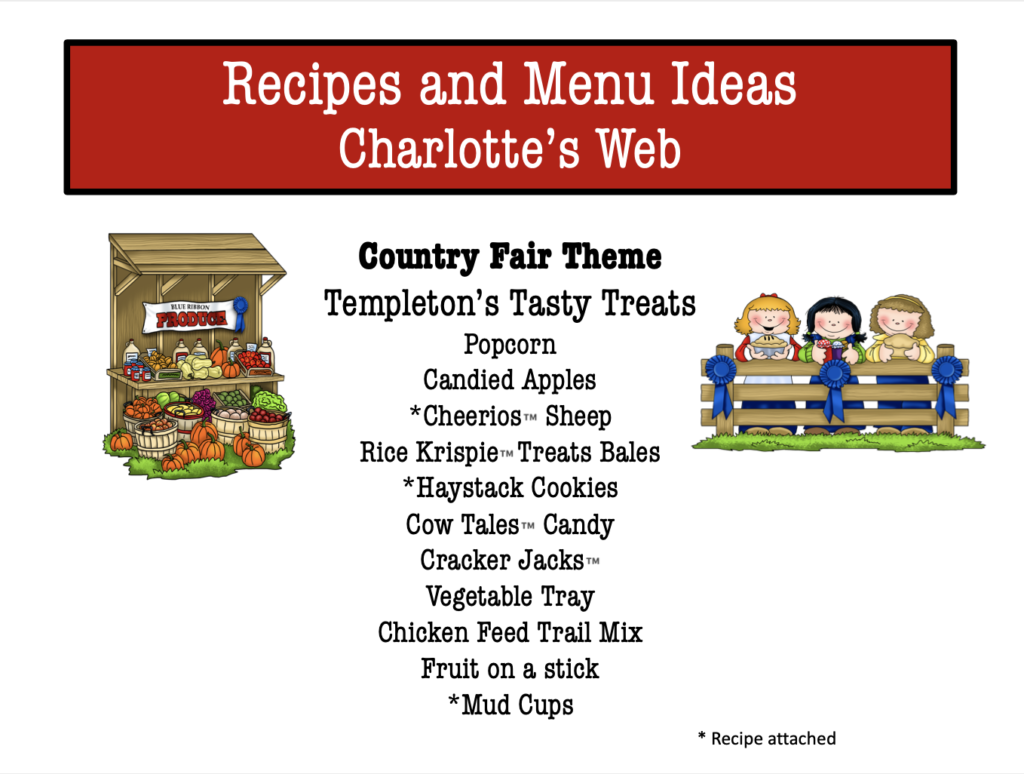

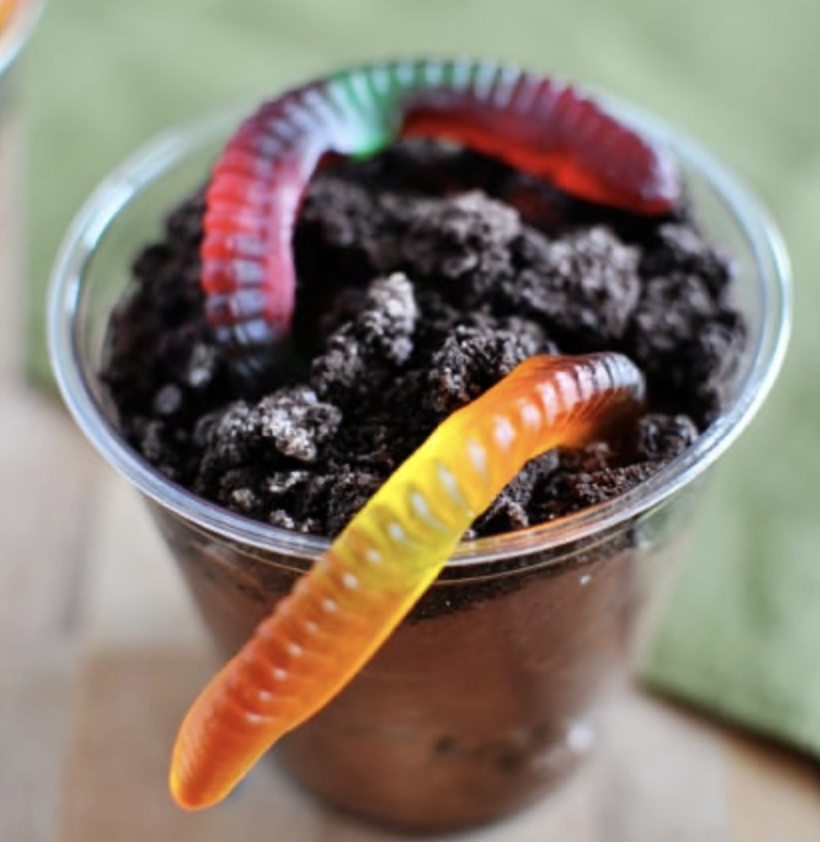
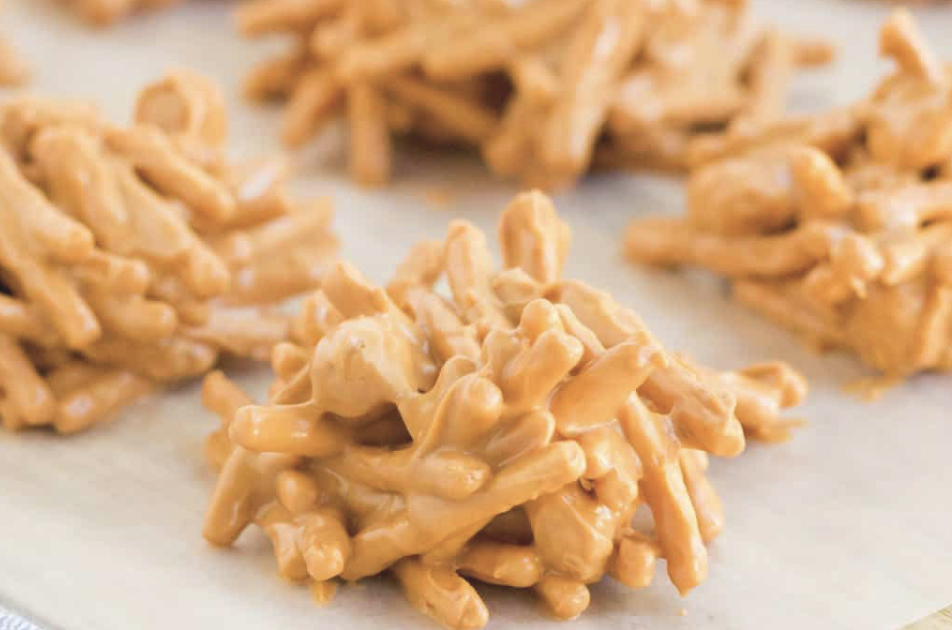
What’s a celebration without food? It’s fun to choose food mentioned in the book or merely create new names for foods that fit with the book. When we were celebrating Charlotte’s Web, our menu was Templeton’s Tasty Treats and had such delights as Cheerio sheep, haystacks made out of chow mien noodles, and mud cups complete with gummy worms.
Last thoughts
This all can seem overwhelming. Right? Who has time to add a lot of extra things into a curriculum that is already jampacked? So here are few helpful tips we’ve learned over the years.
- Start Small Start with a book that you already know will easily align with topics that you teach. Choose one STEM activity and add the Family Celebration. Next year, add another STEM activity.
- Gather books Know where you are going to get a class set of books. Consider options such as books on tape, buddy reading or using volunteers.
- Specialists The specialists who work with your students can be a great help not only helping to identify lessons that would go with the book, but also using their time with your students to facilitate the lesson.
- Activities schedule When you’re evaluating STEM activities to use, keep in mind that not every activity has to be completed while reading the book. Some can be completed before reading to provide background knowledge, after the book is finished as an extension.
We feel that the Classics and STEM program is important. Not only can it totally immerse a student into great literature but the books will help them realize that STEM is everywhere. And of course what could be better than children and parents enjoying a good book together?
Connect with Get Caught Engineering
If you decide to begin a Classics and STEM program in your class we would love to hear from you about how it is going. We’re happy to help in any way so feel free to email us with questions or to suggest ideas. We are always ready to help. Contact us at: getcaughtengineering@gmail.com
Want a Classic & STEM activity that is ready to go? We currently have four Classics & STEM packets ready for you in our Teacher Pay Teacher’s store with more on the way. Follow our store to be notified when new additions are added to the series. Get Caught Engineering STEM for Kids
We hope you Get Caught Engineering!
Wendy and Cheryl
